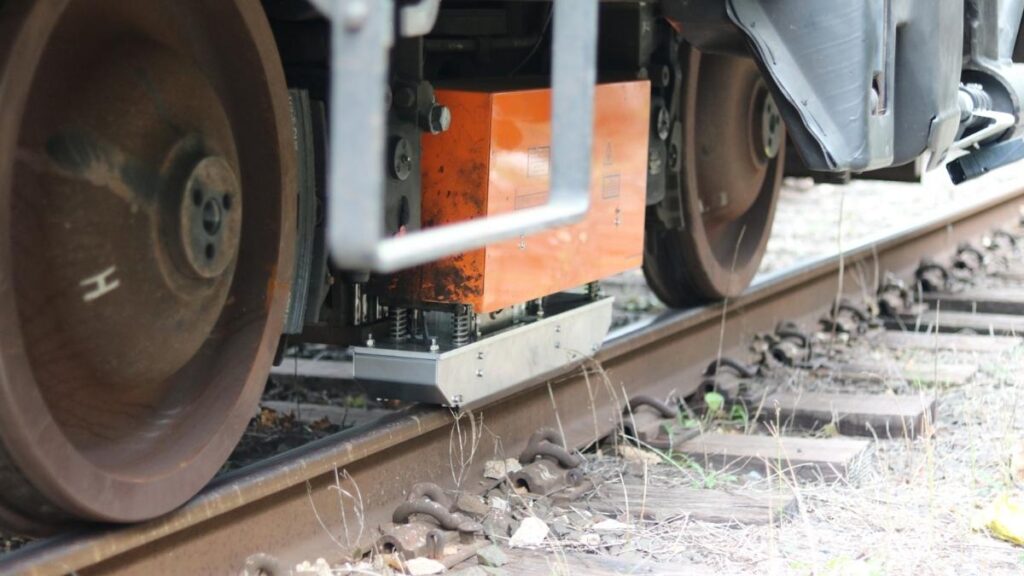Trains fitted with lasers are to be used this autumn to remove the residue of fallen leaves from train lines.
When damp autumn leaves fall onto the railway, they are crushed into a surprisingly difficult to shift black paste that causes train wheels to slip and lose adhesion to the railway tracks. This means train drivers must slow down earlier for stations and signals to avoid overshooting them. It can also affect trackside signalling causing problems in knowing where trains are and running the service safely.
So serious is the problem that the railways have to switch to autumn timetables to cope and run special engineering vehicles along the lines to blast the oily residue off the tracks. Removing leaves from the tracks is also a significant safety issue as leaving it untreated can lead to trains stalling or brakes not working properly, as happened in last October’s crash near Salisbury.
Network Rail has 61 leaf-busting trains, which move around the network cleaning the rails and laying adhesion modifier – a composite material of sand and steel shot suspended in a gel-like substance, which is applied to the rail to clear the tracks and help ensure the signalling system works correctly. They also need to keep 80 leaf-busting teams at key locations to scrub the top of the rails by hand with a sand-based treatment.
It costs around £60 million a year to try and clear the lines and deal with the damage to trains.
Reducing leaf fall onto the tracks at the source by cutting back overhanging trees is controversial, so the railways also have to work out how to remove the leaves once they fall onto the tracks.
The ‘ Lasertrain’, which was developed by Amsterdam-based Laser Precision Solutions (LPS), fires laser beams at the rails that ‘vaporizes’ contamination left by the crushed leaves on the lines. Network Rail will be testing the LPS Lasertrain on stretches of East Lancashire, as part of a UK-wide initiative to bring new technology onto the railways.
The laser train idea has been used in New York City since 2018, and was able to reduce delays caused by leaves on the line by two-thirds. That service only works at speeds of up to 25mph, but the UK trail uses a new version of the laser that can work when trains are travelling at up to 60mph.
During the UK trials, friction levels on a contaminated piece of track will be measured, then the LaserTrain will pass over, and the friction levels will be measured again. This process will be repeated multiple times at varying speeds up to 60mph across several weeks.
If it works, it could be added to the array of techniques used by Network Rail and London Underground to keep the railways clear of leaves on the line.
This article was published on ianVisits
SUPPORT THIS WEBSITE
This website has been running now for just over a decade, and while advertising revenue contributes to funding the website, but doesn’t cover the costs. That is why I have set up a facility with DonorBox where you can contribute to the costs of the website and time invested in writing and research for the news articles.
It’s very similar to the way The Guardian and many smaller websites are now seeking to generate an income in the face of rising costs and declining advertising.
Whether its a one-off donation or a regular giver, every additional support goes a long way to covering the running costs of this website, and keeping you regularly topped up doses of Londony news and facts.
If you like what your read on here, then please support the website here.
Thank you
The post Network Rail testing lasers to clear leaves from the railway tracks appeared first on ianVisits.

